Audio GD R8 DAC, Master 1 preamp, Master 3 power amp, and Magna Hifi ACSS cables
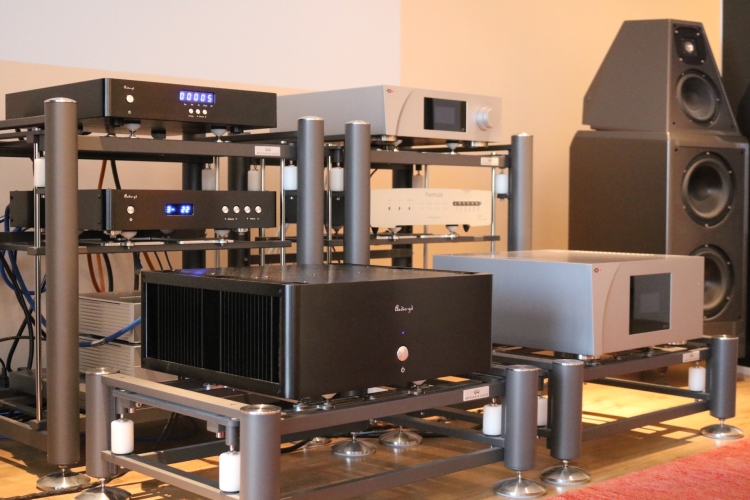
Audio GD R8 R2R Ladder DAC
The R8 DAC has a similar appearance as the Master 1 preamp but because it is part of a different range, it uses panels that are shaped and constructed slightly differently. Nevertheless, it has the same purposeful looks and only a minimum of buttons on the front panel to make for a clean aesthetic. There is no remote control but the DAC offers a lot of options and this can appear daunting at first, especially when you’re not yet used to the somewhat strange logic that is used to change the settings using the aforementioned buttons. Indeed, I feel that its operation would have been more straightforward if they had opted to add two dedicated buttons for value changes but once you get the hang of its logic, you’ll be fine.
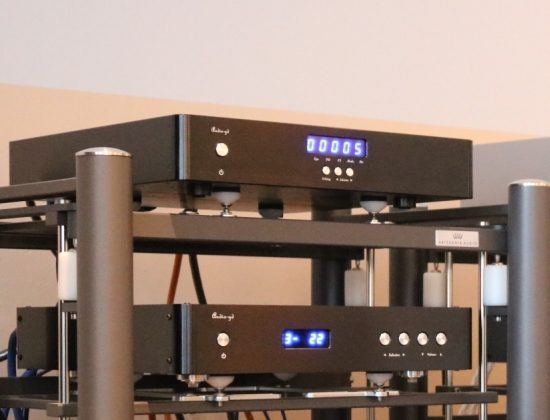
The R8 is a balanced discrete R-2R digital-analog converter equipped with advanced high-speed ladder correction including optimized FPGA FIFO buffering and re-clocking. Two high-performance TCXOs (Temperature-compensated crystal oscillators) are used to process the 44,1kHz and 48kHz sampling ranges. After D/A conversion by the R2R modules, the analog signal is output via fully discrete, DC-coupled, matched-transistor output stages. Built-in 2X, 4X and 8X oversampling and digital filters as well as 4 different true NOS modes using 6dB analog filtering which makes for one highly configurable DAC.
A true discrete Resistor Ladder DAC means that rather than a standard chip, it uses a range of resistors that are basically switched according to the number of bits used at any time in the audio stream. Naturally, these resistors need to be of very high accuracy but as the manufacturer points out, low tolerance in itself is not enough. The following calculation is used to point that out.
At 16 bit, a tolerance of 1/66536, 0.1% (1/1000) is not enough to achieve decent performance. Even when using resistors with 0.01% (1/10000) tolerance, which is the lowest tolerance available today, the desired performance cannot be obtained and this is just 16 bit. To process 24-bit resolution it would require resistors with a tolerance of 0.00001% which is purely theoretical. Even if this tolerance would exist, the switch logic chips will already have too much internal impedance and will shake-up such design. So, the tolerance of the resistor will never solve the Imperfections of a ladder. The solution lies in the combination of ultra-low tolerance resistors controlled by a correction technology using very high speed with parallel FPGA processing.
As the manufacturer points out, many competing R2R products, especially affordable ones, use only the basic conversion and not the correction technology and therefore, they do not achieve the same level of accuracy. Every audio component is only as good as its power supply, so just like with the Master 1 preamp, the R8 DAC has a heavy emphasis on its power supply, using 3 R-core transformers and 21 low-noise regulation stages. There is a lot more info about DAC technology on the Magna Hifi website, including the pros and cons of R2R versus Delta/Sigma so if you are interested, be sure to check that out.
Although the R8’s main selling point is clearly its R2R conversion of PCM signals, the DAC also supports high-resolution formats including native DSD64 – DSD512 as well as DxD. Unlike some other DACs, the R8 does not convert DSD to PCM but rather processes this via a separate converter. Personally, I only use PCM source material and don’t care much about DSD but I certainly appreciate the separate-path philosophy. A derivative of the more expensive R7, the R8 is said to preserve the same musicality with only minor changes to some parts of the circuitry. For instance, the output stages of the R7 are all independently buffered while the R8 uses a single buffer for all its outputs. That in itself is no issue at all and may even result in better sound. The downside of this is that you can’t use its cinch and XLR outputs at the same time. You can, however, use ACSS and any of the two other outputs simultaneously. The R8 has plenty of inputs for every conceivable source: AES/EBU, cinch, TOSLink, I2S on HDMI, and USB. The latter uses the Amanero USB class 2, 32bit chipset, rather than the often-used Xmos solution. As with the Master 1 preamp, outputs are provided as cinch, XLR, and balanced ACSS.
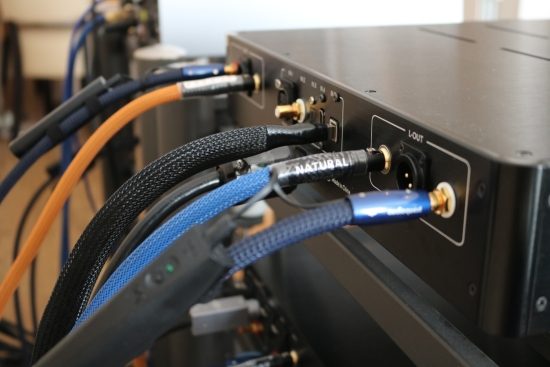
Sound
A very important aspect of an audio component’s delivery for me is tonality, or rather, that they sound natural. With the classic Sony ES components and later also with certain Chinese components, I found that the sound was somewhat synthetic, in other words, it was acoustically not convincing for me. This is not something that can be tagged onto entire countries such as China and Japan, though, as clearly proven otherwise by the very natural sounding Accuphase and various other Chinese products that I reviewed. Rather, I think it is related to design choices and the selection of internal components, as well as the way that I interpret reproduced music with my systems. In any event, the Audio GD components have a wholly natural presentation: there is no artifice here!
The obvious comparative partner for the R8 in my arsenal is the Aqua Formula xHD DAC because both DACs employ discrete R2R resistor conversion. At over 13K euro, however, this is, again, not a fair comparison. Using the Final Touch Audio Callisto USB cable and AudioQuest Water cinch interlinks for both DACs, there was absolutely not the huge difference that I was expecting. The Aqua is a little smoother, more refined, especially in the treble, and it also has an even more linear presentation, flatter in perceived frequency curve so to say. So, the Audio GD is less well-differentiated, a little bit rougher and not as ruler-flat. But that really is all there is to it. Otherwise, I really cannot say that there are any meaningful sonic differences between these two DACs. And that really is a remarkable achievement.
For the most refined sound, I found that the Final Touch Audio Ganymede worked best and the Cardas Clear was also a good combination. The Vermouth Reference XLR yielded a more sonorous and more powerful and very precise sound but in this case, I preferred the gentler and airier treble performance of the other two cables.
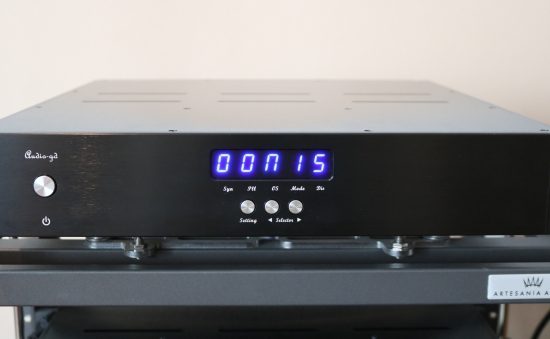
The best setting for my ears: sync and PLL set to zero and no oversampling.
DAC filter settings
The number of options that the DAC offers can seem overwhelming at first but when you get down to it really is quite simple. Basically, you have the option to listen with or without oversampling, the latter commonly referred to as NOS. Where it gets a little bit more complicated is that in each of these settings you have further options to refine the sound. In the oversampling mode, you can select 1x, 2x, 4x, or 8x oversampling. Between these 4 options, I don’t hear a whole lot of difference but your mileage may vary. In the NOS mode, you can select mode 1 (simplest data process), mode 2 (data FIFO process), or mode 3 (fastest data process). Between these modes, I hear clear differences, mode 3 sounding smoother and more “filtered” and mode 1 sounding most articulate and direct. Mode 2 I don’t really know what to make of but it also has a certain “filtered” just like mode 3. Of all the options, I most prefer NOS and mode 1 but I also like 1x oversampling for its slightly smoother presentation than either of the NOS modes, which may work very well in systems that inherently are a little forward or possess a little edginess. With the Kroma’s and the Naiu Ella amp, I have a clear preference for NOS mode 1. In this mode, it most resembles the Aqua Formula xHD DAC and it was in that mode that I made the comparisons.
The first discrete R2R DAC that really blew me away was the 1600 euro EC Designs Mosaic T-DAC. This DAC managed to outperform much more expensive DACs, primarily in terms of refinement and purity, but ultimately fell through for me because its bass lacked attack and drive, due to its very purist design that does not use any output stage. The next discrete R2R DAC that had me smitten was the Aqua Formula xHD and it did all that the Mosaic did along with tuneful and powerful bass. The Aqua has a hefty 13.670 euro price tag but to this day it remains my reference in its price class. Where does this leave the Audio GD R8? Pretty darn close to the Aqua, actually! Apart from the Aqua, it is with ease the best discrete R2R DAC that I have heard. And even when taking “regular”, non-discrete R2R DACs into account, all the ones I really liked invariably carried 5000+ euro price tags. I’ll refrain from mentioning the Audio GD prices just a little longer but suffice to say that the R8 is A LOT less than that.
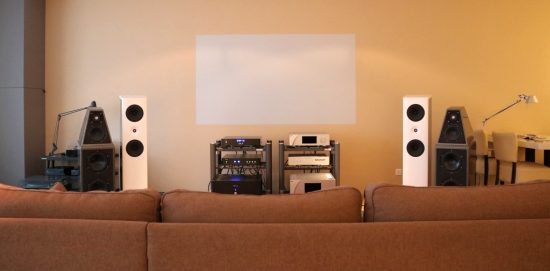
Although the Kroma Audio Carmens managed to stay out of sight in most of the pictures, the majority of the review has actually been conducted with these speakers, with the Wilsons moved to the side of the room.
ACSS Sound
I already explained the principle behind ACSS in part 1 of this review but now I’d like to dive more into the format’s aural aspects, relative to the cinch and XLR connections. Along with the Audio GD components, Jos delivered Audio GD ACSS cables as well as Magna Hifi M-Way ACSS cables which they manufacture themselves.
Starting with the Audio GD ACSS cables used between Master 1 preamp and R8 DAC, I was quite astounded by their performance. Although less colorful or less timbrally rich than some of my other cables, even these very affordable cables managed to outperform any of the other cables by sounding a lot less restrained dynamically and by having much freer soundstaging that was also more enveloping. The ACSS cables somehow allowed for better 3D imaging and a larger swing in the depth plane, images being more behind the speakers as well as more in front of them.
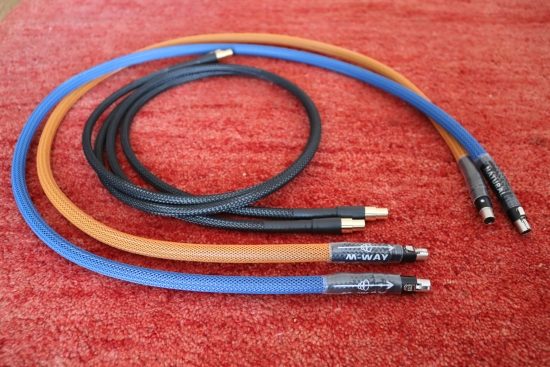
Audio GD ACSS cables in black and Magna Hifi M-Way ACSS cables in red and blue.
Further upping the game with the Magna Hifi M-Way ACSS cables, the aforementioned advantages of the Audio GD ACSS cables remained but enhanced with a smoother, more natural delivery that was more voluptuous and more richly textured, yet, while retaining the transparency and without sounding too warm. These cables make the Audio GD components sound richer and more relaxed yet still crystal-clear and with infectiously spot-on pacing. What convinced me most of all about the M-Way ACSS cables was the combination of factors such as even-handedness, warmth, and transparency and a seemingly ruler-flat frequency curve as well as a dynamically more outgoing and more free-flowing delivery.
In the section about the R8 DAC, I mentioned how it compares to the Aqua Formula xHD DAC, both using cinch cables. Switch to M-Way ACSS connections between R8 and Master 1, though, and the difference in quality between the two DACs becomes a really close call. With these cables, on the one hand, the Audio GD now had the upper hand in terms of depth of soundstaging and the feeling of being enveloped by a more free-flowing sound, on the other hand, the Aqua (with no ACSS connections) still sounded a little bit more refined and transparent and refined.
The M-Way ACSS cables outperform all the other cables that I tried, including Cardas Clear and Hexlink Golden 5C, Vermouth Reference, Final Touch Audio Ganymede, and AudioQuest Water. These cables do all offer a change in perspective and of course one could opt to tweak the sound that way. For instance, the Hexlink sounds fuller and more voluptuous, the Vermouth sounds more solid and precise and the Final Touch Audio sounds more relaxed and more seductively refined. However, their relative merits aside, all these cables’ presentation with the Audio GD components is somehow more business-like, more matter-of-fact than with the ACSS cables. I can only conclude that Current Conveyor Technology, in this case in the shape of ACSS, absolutely has a considerable added value over XLR and cinch.
USB Blaster
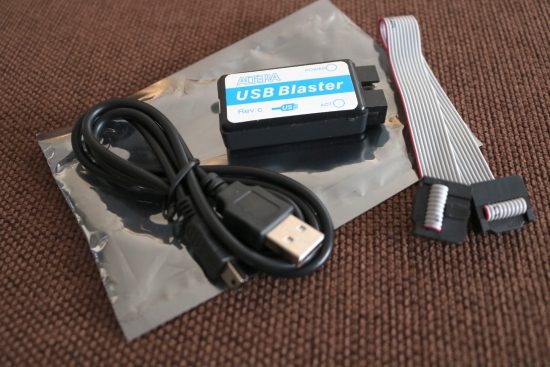
Audio GD has a history of being highly tweakable. Older generations of their equipment could be altered in many ways by replacing jumpers inside but current-generation equipment can be updated by using a USB Blaster as pictured above. This way, one can upload firmware updates that allow new features such as a TDA1541 emulation with two passband options and other NOS/OS options. Currently, 4 firmware issues are available for the R8, free of charge. If required, Magna Hifi will assist with the process.
Retail Prices
If you haven’t looked them up already, finally, here are the retail prices in the Netherlands, including 21% sales tax. Now tell me, honestly: did you expect them to be this low? I certainly did not.
Audio GD R8 DAC: 1649 euro
Audio GD Master 1 preamp: 1399 euro
Audio GD Master 3 power amp: 2199 euro
Audio GD ACSS cables (mini XLR/mini XLR): 33 euro for a 1-meter pair
Audio GD ACSS cables (mini XLR/4P XLR): 55 euro for a 1-meter pair
Magna Hifi M-Way ACSS NTRL cables (mini/4P XLR): 375 euro for a 1-meter pair
Conclusion
I’ll be honest: I think that the R8 DAC is the star of the show, sounding very nearly as good as the Aqua Formula xHD DAC which given its low price is an amazing achievement. But don’t assume that the Master 1 preamp and Master 3 power amp are mere bystanders. This pre-power pair also offers extremely good value for money, delivering a combination of transparency, neutrality, and even-handedness that is normally impossible in this price class. I think you can easily spend double the amount and not get better sound. But the most amazing aspect of all is perhaps the further increase in performance when all the components are wired using the proprietary ACSS connections, giving the system such a leap in performance that it becomes impossible to fault, even in the company of esoteric hardware. Oh, and should you still be worried about the build quality of these products then the 10-year (!) warranty should instill confidence.

(Master 1)

(R8)
Read Also
Audio GD Master 2H Mono Power Amplifiers and a revisit of the Master 1 preamp
External Links
Audio-GD Reseller (including service and repair) for Europe: Magna Hifi
Manufacturer: Audio GD
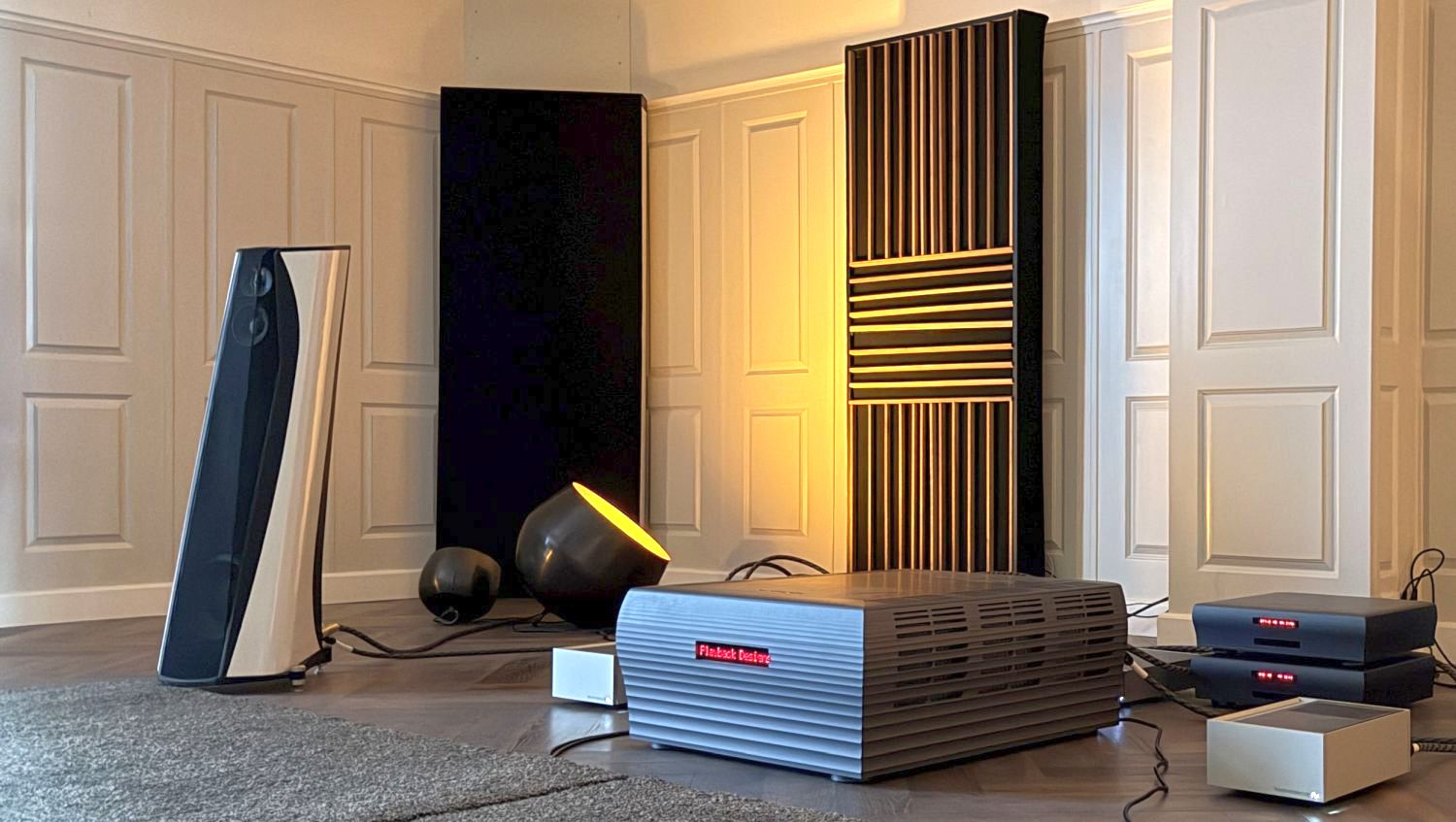

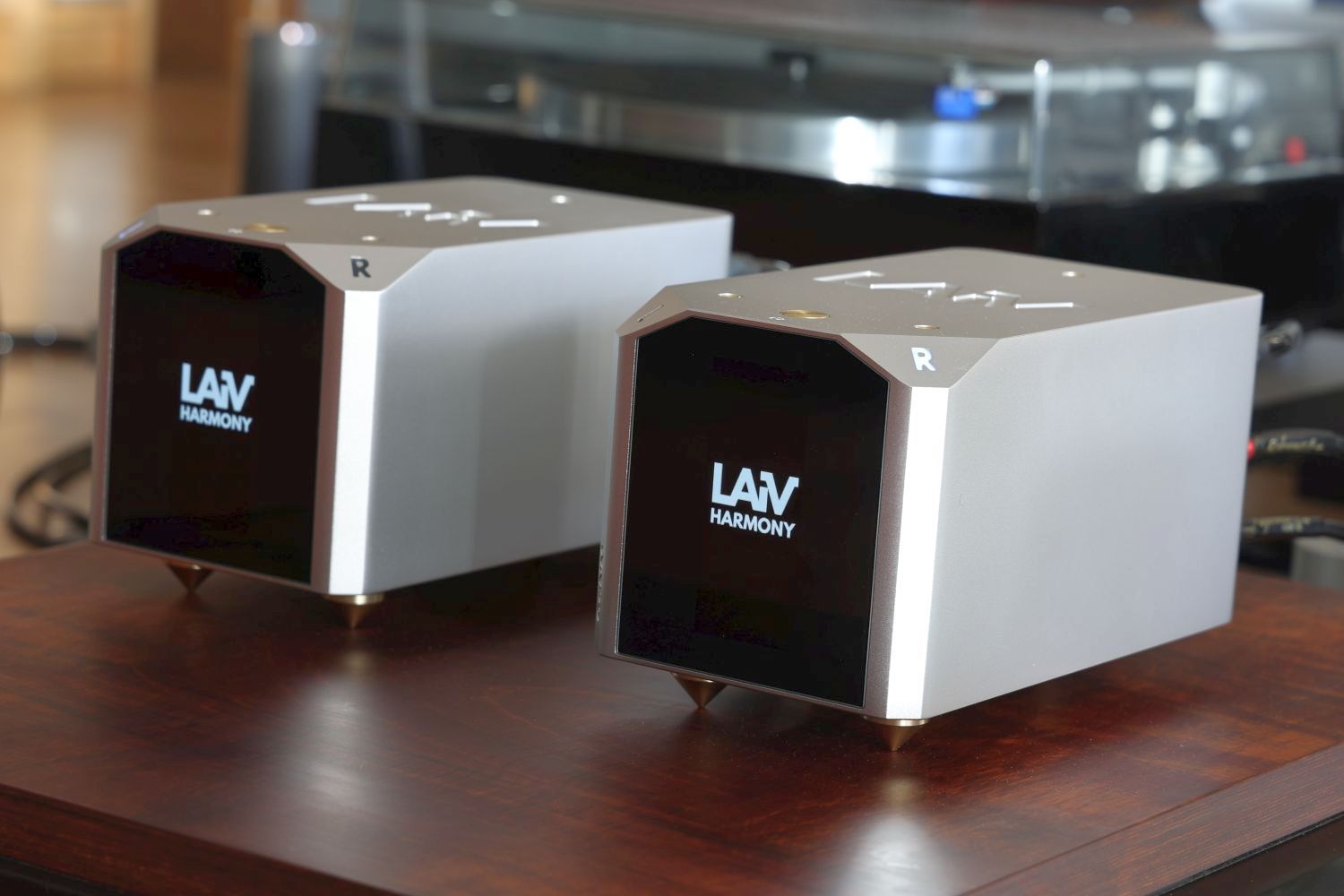
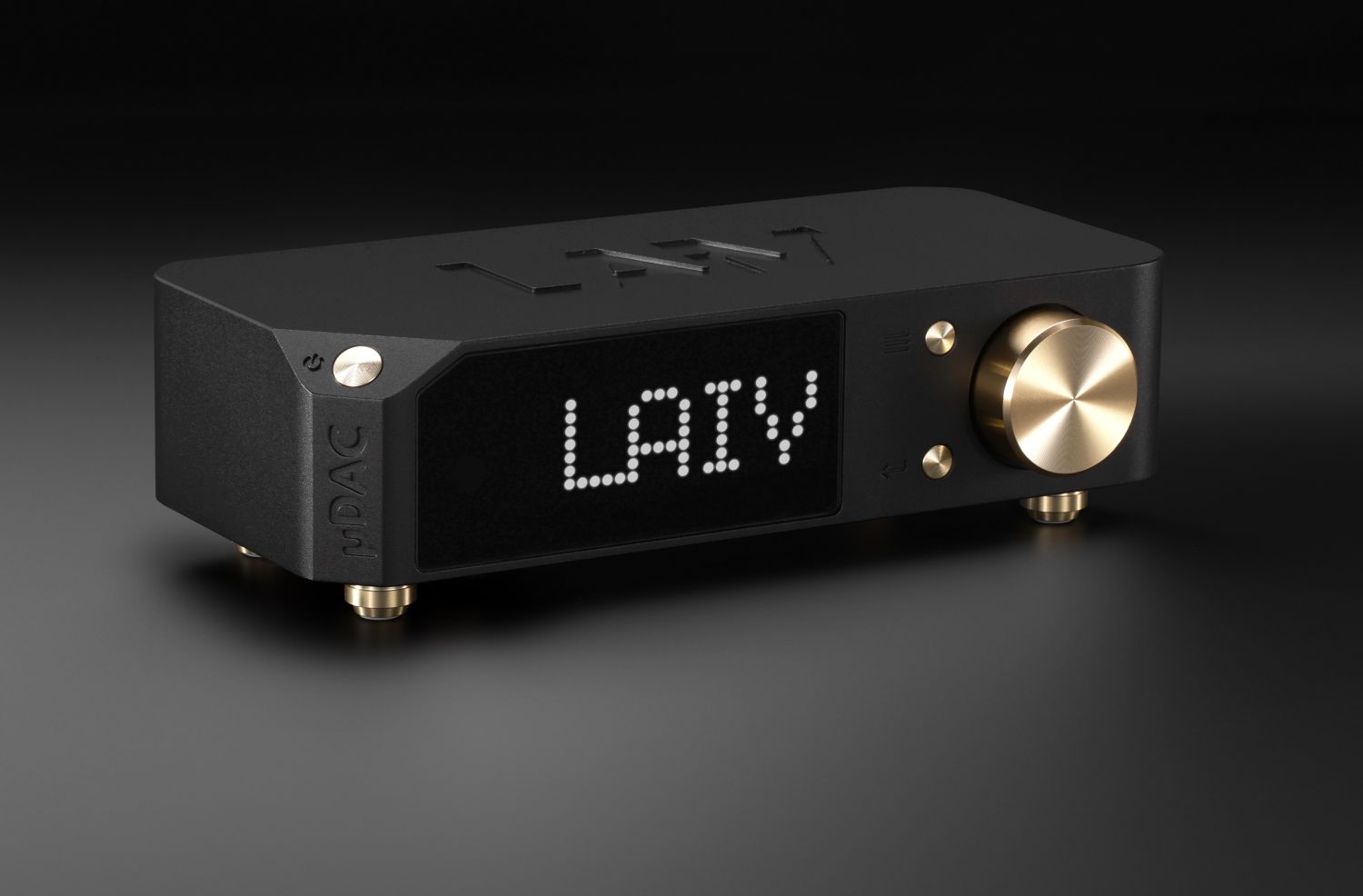
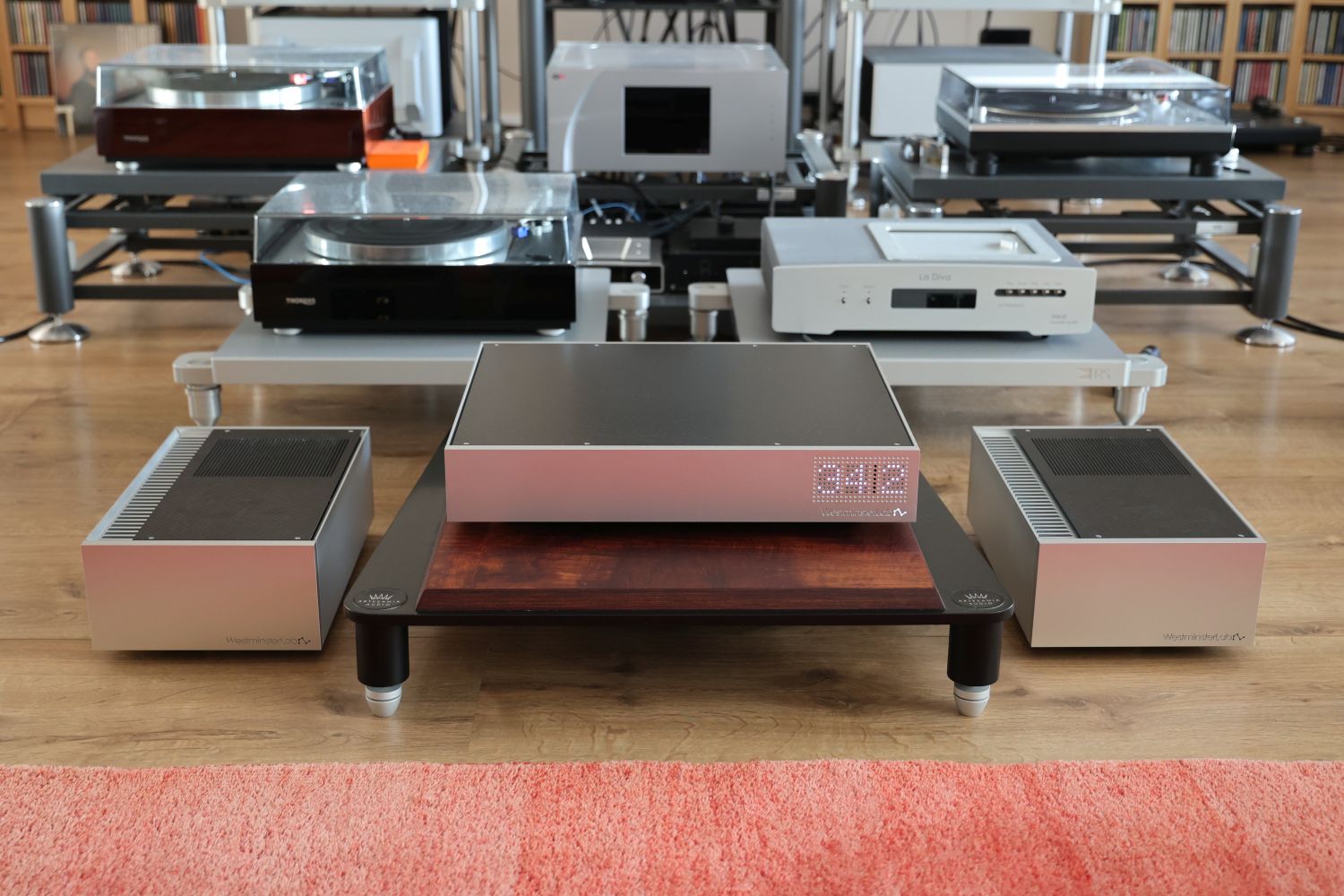

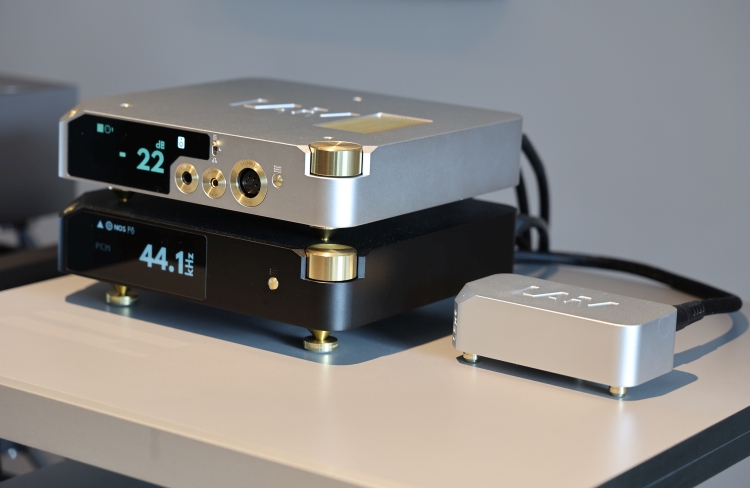

Hi Christiaan,
In the running in paragraph you mention using all components together, so I wonder how you manage to establish that it is the power amp that needs the most time settling in, rather than the preamp or DAC. How can you tell?
Kind regards, Johan
Fair question Johan! Well, it’s simple, really. I just shuffled the timelines in the story-telling. In reality, I first listened to the DAC, then the preamp, and then the power amp. When I found the latter to sound thin at first, I left it switched on while tending to other things to review and revisited the amp later and only the complete system all the way at the end.
Thanks for clearing that up, now it makes more sense.
Your review pretty much sums up the way my Audio-Gd Master 10 sounds though I think you were a bit to polite in your review as really it just sounds boring and not in an accurate way . Audio-Gd’s Kingwa is polite to sell a product but when it comes to supporting their customers for a warranty his politeness ends as I still have a Master 10 with a right noisy channel and absolutely no help from Audio-Gd in resolving this pretty much the attitude of most Chinese sellers towards foreigners . If you do not mind reviewing Chinese amplifiers you should take a look at a Chinese amplifier inspired by DartZeel called the NHB-268/368 on TaoBao SR Audio or AliExpress Queenway a real bargain though again no support for its customers .
Hi Stoka, having a noisy channel is not good of course and this should be fixed. I am sorry to hear that the Audio-GD customer support is not any help in this. That is why it is advisable to buy from an official distributor rather than factory-direct. Anyway, regarding the Master 10 sound, I agree that it is not very entertaining or special on its own. It is very neutral and quite transparent but indeed not as accurate or refined as my much more expensive alternatives. When connected using the very full and organic sounding M-Way ACSS cables throughout, however, I found the combo to sound very good, especially given the relatively low price tag. I think I outlined all of these aspects in the review. For me, the preamp and especially the DAC are the stars in this lineup.
It is a fair point but I purchased before they were available in stores . Though you would think the actual owner Kingwa would be of a more decent attitude towards his customers . I would love to try the ACSS though it is tailored predominantly only for Audio-Gd DAC’s which limits its use unless you have Krell’s old school current driven equipment . When matched with a decent powered tube pre-amplifier the NFB-268 I have bought absolutely puts the Master 10 amplifier to shame where I have delegated the Master 10 to my home theater rears channels .
What do you think about timbre charateristics of the Master-10? Have you ever listened Nuprime amps?
Audio-Gd is not innovative it does as all Chinese manufacturers do they copy well implemented Western designs such as Audio-Gd’s ACSS is just copied from Krell and its buffered output is from Sansui and its Ladder DAC’s were a copied response to the discrete DAC fad the Western DIY community started . Though the difference Audio-Gd has over most Chinese copy manufacturers it is well implemented and sounds half decent for the money and is of course built like a battleship .
Wow……
thanks for the great review…..as usual
and you have not heard the big-brother R7…..
and yes…..it is right…the front panel as its own logic……but once you get it, it is clear.
I am waiting for Master 3 and Master 1 to arrive at my house soon, and I am already a very happy owner of an R8 dac.
After testing a Metrum Ladder dac recently at an international Audio Show in Australia where we presented our speakers, I decided to have a ladder dac in my system.
The Metrum is a great dac, but I think the R8 is even better. But to be fair, it is difficult to confirm it without making a side by side comparison with the same audio system.
All I can say is that in our system and for the first time I have listened to the most analog sound of any digital component to date.
Talking to Kingwa he mention that his Master 2H monoblocks is the option if you are looking for a more bassy amplifier but with the same refinement and natural sound as the Master3
Did you get your Master 1 and Master 3? How does the match sound with your R8?
I am of course not in any manner involved or part to Audio-GD business.
I am just an audio enthusiast!
i purchased the R7 DAC, and 20 days later the pre Master 1 from Magnahifi
both products are fantastic!
connected via ACSS
they easily outperform everythink i have listened in the past for
tranparency, timbre, soundstage, articulation and precision.
a great and involving musical experience
The bass “presence” in the Orchestral pieces is simply great
not to mention that the R7 (and R8 as well) has 4 different algorithms to match your personal taste, and firmware updates.
I decided for Audio-Gd thanks to the great work of the Reviewer himself. Otherwise the brand itself is quite obscure and unknown.
Christiaan’s transparency, precision impartiality and deep-technical background makes reading hifi-advice reviews a real pleasure.
Thanks Luca, it’s great to receive such feedback and I’m glad to hear that you are so happy with your Audio GD components!
Hello Christiaan,
Thank you for the review, very interesting.
I have the R8 DAC and I think its an outstanding DAC. Nevertheless, I STRONGLY recomend some upgrades (ot too expensive) that I think turn the R8 into a musical beast:
1. If you have an R8 version prior dec-18, buy the V2 DA boards from Audio-GD directly and then change them at home. You will need some tech skills or to have a trusted technician near by as I did.
2. Acusilicons clocks. Another GREAT upgrade that you can buy at Audio-GD and similar to change as the V2 boards.
3. Gustard U16. A UBS to I2S (HDMI) converter. Another GREAT upgrade to feed the R8 with the I2S port and get a MUCH better sound than with the USB Amanero board.
4. W4S UBS Reclocker. A good one to feed the U16 with a cleaner USB signal. Or any other good USB conditioner.
There are several threads about these three first upgrades on Head-Fi forum.
Regards,
Thanks for these suggestions Pedro.
Hi Christian,
I’m the owner of HULGICHAUDIO (www.hulgichaudio.com.au) and I regularly read your reviews as I find them very well presented and professional.
Having some AudioGD gear myself I can’t agree more on your observations about their sound.
As a developer of high-end speakers, I regularly have the opportunity to test very hi-end equipment myself, and AudioGD is amazing great value.
Best regards.
Nicolas Hulgich
HULGICHAUDIO
Hello again Christiaan,
I had the opportunity to try a Benchmark DAC3 in my system last night, in comparison to my 2021 R8, which is paired with a Master 1 & AMG-STAs. I noticed that the Benchmark had a slight, but meaningful edge in the presentation of vocals. More detail and texture was clearly audible to both my friend and I.
I would really value your advice on which parts of my system you would consider developing to move in the direction of this particular outcome? Other than just buying a Benchmark DAC3 🙂
This is my setup (a lot of which will be familiar to you):
A modded Cisco Meraki switch with an SBooster linear psu, connected to a ethernet fibre media converter, on the 5v output of a Keces P3 linear psu
A Mano Ultra streamer via an Audioquest Pearl ethernet cable and Mogami SPDIF cable
A MiniDSP SHD Studio with a Mogami 3080 AES/EBU XLR digital cable on the 12v output of a Keces P3 Linear PSU
An Audio-GD R8 Dac 2021 with two M-Way ACSS NTRL interlinks
An Audio-GD Master 1 Preamp with Foilflex XLR Balanced cables
A pair of Nuprime of AMG STA power amps on IsoAcoustics Orea Graphite pucks
A pair of Wilson Benesch Precision P1.0 with a pair of FoilFlex loudspeaker cables on IsoAcoustics Gaia IIIs
A pair of Townshend Maximum Supertweeters
A pair of REL T/7i subwoofers on IsoAcoustics Gaia IIIs
Thank you as ever & best wishes,
Jason
Would it be possible to approach Magna about getting an Audio GD R7HE Mk2?
Headfi is going mad for this dac, so it might be good to compare it to the Aqua Formula HDx V2 that you have. I, for one, would be very interested to see how it stacks up,
Thanks
Hi James, can’t promise but will keep it in mind.
Hi James, alas, due to the limited availability and increasing delivery times, I am unable to get the Audio-GD or Holo Audio components for this review. At this point, and so long as the situation remains unchanged, the distributor understandably would rather make sales than postpone these due to reviews. The Denafrips components will be available in about a month and I am considering doing a one-brand comparison with three product levels.
Hi Christiaan,
You have reviewed the Bryston 4B3 amplifier in the past.
I know it’s difficult to compare from memory but how does the Master 3 fare against the Bryston you think ? I know the Bryston is much more expensive but the Audio-gd gear seem to push the limits of their price range. I expect the 4B3 to sound much better but by how much ?
best regards
They’re so different that I couldn’t say which one is better per se. The Bryston sounds full and rich in the bass, smooth overall, a little sweet, and a little relaxed, but quite neutral nonetheless. The Audio GD has a tight and articulate bass, with an overall faster, cleaner, leaner sound. In terms of resolution, I’m not entirely sure without an AB comparison. It could be a tie or maybe the Audio GD is slightly more highly resolving. Either way, it’s mostly a case of more forgiving versus more analytical. You may find the Bryston to be more “musical” but I feel that the Audio GD is closer to sounding like a wire with gain. On a related note, my experiences with the M2H monos have made me think that maybe I haven’t given the Master 3 enough time to come on song. Or maybe the M2H’s are just that much better, that’s also entirely possible.
hi Christiaan
Wow, you’re fast. The “ink” on my post hasn’t dried yet and you already came with an answer !
I already own the Master 3 and overall I’m quite satisfied with how it sounds. I was just wondering if spending more would bring a significant improvement. However, reading your comment it seems that the current price of the Bryston (€ 7.500) being almost 3,5x the price of the Master 3 is not really justified. It seems more of a side way step than a real improvement. What would you recommend as a step up from the Master 3, besides the 2H monoblocks (too much “real estate” for my living room) and staying below the five figure price tag of the high end ?
By the way, may I recommend reviewing the Rotel Michi S5 power amp ? This one seems to be a winner and is even relatively affordable.
best regards
It depends on what you consider an improvement as well as on what you expect. The Master3 can be regarded as neutral and highly resolving but perhaps a bit lean and analytical whilst the 4B3 can also be regarded quite neutral but richer and more colorful and with bigger/fatter bass. There are no absolutes. What I can say is that if you like the Bryston sound, it will be very hard to improve upon without spending a fortune. And the same goes for the AGD. Between these two, it’s more a matter of perception than of absolute quality. One person may feel that the Audio-GD is not very musical while another may feel that the Bryston can be a little slow. One major upside for Bryston, of course, is the 20-year warranty.
The next step up from the Master3 is indeed the M2H’s. Anything else that I consider to be significantly better jumps right over the 10K mark (see my amp reviews).
Another brand that also offers amazing value for money is NuPrime, most notably their amplifiers. The AMG STA, for instance, has amazed everyone who heard it, even seasoned audiophiles have to admit it’s much better than they anticipated. It’s not perfect but has a “more or less” similar overall balance as the M2H, as in also linear and transparent, and it improves on the Bryston in some respects, but not all, of course. Also, I wouldn’t say it beats the M2H’s.
I’ve noted the recommendation for the Michi amp. Can’t promise anything, though.
Good evening Christiaan,
I wanted to ask you, kindly, if you have had the opportunity to try, or if you will, also the Audio-gd Master 3A in class A.
Thank you for your attention,
Andrea
Hi Andrea, I’ve not heard it myself but what I am told is that it sounds smoother and fuller but also less articulate than the Master 1.
Thanks for the quick answer, one last clarification … what do you mean by “less articulate”, perhaps less fast?
Thanks for your kind availability
Articulate is the opposite of mumbling or being close-mouthed. I use it when referring to music that sounds very precise and detailed, particularly in the lower frequencies, as opposed to sounding warm, fat, thick, or woolly. See also the HFA Audio Lingo.
“Wow, look at all this time that has passed, I wonder where Audio-GD is in terms of DACs and preamps at this point vs lets say, Denefrips and/or others…”
Any chance of seeing a R-27HE review (DAC/pre), and/or its separate counterpart the R-7HE MK3 DAC and the HE-1 MK3 preamp??!!
Yeah, time really does fly! Regarding the R-27HE, I would be happy to review it if the distributor wants to set this up.
…I just heard there is a huge jump in quality and performance since their pre- 2021-ish models.
@Christiaan, I’ve reached out to a Audio-GD and Magna to see if they can’t get the ball rolling. Let me know if the care about their potential customers!
Hi Marc, I’ve not yet heard back from them. But if and when a review is planned, I will announce it on the home page.